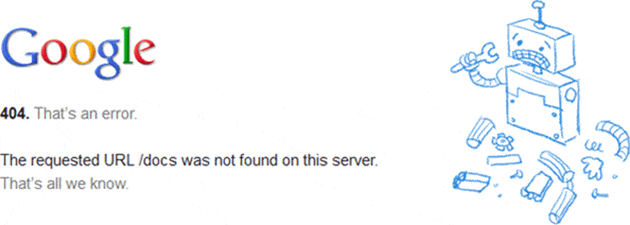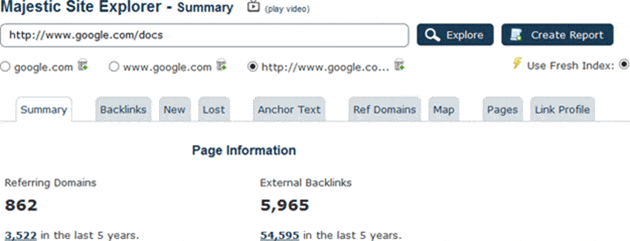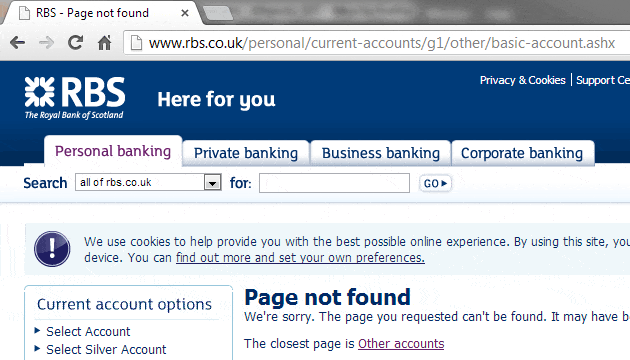Link reclamation isn’t new. But it is essential. It’s a fundamental part of any solid SEO plan and involves:
- Salvaging your unlinked brand mentions
- Gaining attribution for unaccredited use of your content such as infographics
- Repairing broken links to your website
None of them are hard. They might not be especially fun or exciting. But by omitting this task from your SEO calendar you’re leaving valuable links on the table.
Fix the #@@!#@$ easy links!
Let’s look at arguably the easiest of the 3, repairing broken links. Especially easy as it doesn’t involve complex search queries or require outreach campaigns to carry it out.
It’s natural for sites to create broken links for themselves over time as their IA gets changed during a website re-design, outdated pages get deleted and so on but it is incredible how many companies just abandon their hard earned links to their resources in the process.
As we all know, doing this:
- Reduces the Domain Authority (regardless of your favourite metric)
- Invites the referring site to remove that broken link during a site audit
- Creates an opportunity for others to acquire it via broken link building
- Cause users to bounce, resulting in missed leads and poor user experience
- It enables other SEOs to portray you as incompetent to your client
- And so on…
Hint: THE ABOVE ARE ALL BAD THINGS
And it’s not just small companies who forget to check periodically for low hanging fruit…or as Ian Lurie would say “the #@@!#@$ easy links”.
Preventing these occurring in the first place is just one of the benefits of using a web design agency who are also entrenched in SEO but regardless of how adept your web designers are with SEO it’s the responsibility of the SEOs working on the site long terms to spot these and fix them regularly.
Look! A broken fake Roger!
You’ll probably remember last year that Google Docs re-branded to Google Drive. Here’s the current state of the old URL (www.google.com/docs) many of us used to access the service:
And look how many abandoned links have been left behind:
Not to mention the inconvenience and confusion it must cause users who’ve bookmarked the page or arrive via one of those links.
OK, maybe Google doesn’t care about its own backlinks and their services are so well documented any partially determined user would find their way to Drive.
But if you hunt around it still happens all over the place to companies. Big and small.
I know Martin Macdonald works with some big firms so I asked him if it was the same across the board:
“Its unfortunate, but well structured 404 handling which we expect in the SEO industry hasn’t really permeated to the large travel companies I work with.”
It seems it’s not specific to any particular group or vertical and just a general problem.
Very Quick Tutorial
Obviously to do this conclusively for any site would require compiling links from a number of tools and sources like GWMT but for the sake of this article I’ve only used Majestic SEO to illustrate the point.
In case you’re not accustomed to the process here’s what I’ve done:
- Search for all links on the root domain of the site using Majestic’s fresh index
- Download them as a CSV
- Within the Target URL column filter out the homepage (both the www and non www versions assuming one 301’s to the other) and any duplicate URLs
- Upload the remaining list to Screaming Frog in list mode and crawl them
- Export all the pages with a 404 response code
At this point we have a list of all pages which have backlinks to them and return a 404.
If you wanted to you could just 301 them all to closely relevant live pages but if you’re an SEO you probably want to show the value you’ve added to the project and if you’re a business owner you probably want to know what value you got from the exercise.
So a few more steps:
- Upload that list back into Majestic using the Bulk Backlink Checker
- You now know how many backlinks your broken pages have and the quality of those links
You’re done!
Look at this RBS Mess
RBS have over 1250 backlinks, from nearly 350 domains, to over 125 various landing pages and promotional resources they’ve used in the past which now just 404.
Let’s just look at 1 of those pages which has 13 referring domains.
Some of the referring domains are closely related trusted sites with good PA and DA.
Admittedly not every referring domain will be amazing quality but remember too that not every site that links to you is picked up by the backlink tools. Even some really big ones.
When we produced the Google Reader Song it got links from many DA:90+ sites like Buzzfeed, News.com.au, Networkworld, KnowYourMeme.com and so on yet none of them show up in Open Site Explorer or Majestic yet.
When you 301 some of your 404 pages you might be reclaiming links from some very high authority sites without even knowing it.
Expert 301 Advice
This tip comes from Dave Naylor:
Never 301 internal pages back to the homepage that’s just crazy insane. Create a landing page and 301 to that if you can’t find something similar to 301 the page to.
More 404 Deplore
While I was looking at the broken links within RBS and Google I had a quick look for sites they link out to which also result in 404 responses.
Here are just a few sites, who RBS with a DA of 79, link to broken pages on:
- DA:99 – http://www.oft.gov.uk/
- DA:97 – http://www.adobe.com/
- DA:72 – http://www.bba.org.uk/
Not exactly small sites either who aren’t reclaiming their links.
Google, with a DA of 100, links to broken pages on Forbes, Apple, PC World, You Tube, Boston Magazine, B to B Magazine and hundreds more.
And if you search those sites in turn you’ll find this trend continues and on and on and on it goes.
Giant Sites Don’t Care?
Perhaps. But most of us don’t work for the giants and carry out SEO for much smaller companies or start-ups who do care assuming they understand the value.
How happy might your new client be if you salvaged them a link from Google on day 1 of your SEO campaign?
I stopped crawling Google.com after 25,000 URLs but here’s just a small handful of sites Google links to that 404 that probably would care a lot:
- http://www.justdigital.com.br – A Google enterprise partner and Drupal specialist
- http://sketchup.com/ – 3D drawing software
- http://www.americanprogress.org/ – Centre for American Progress
- http://www.jointventure.org/ – Analysis and action on issues surrounding Silicon Valley
- http://www.innoventsolutions.com/ – A consulting firm
And so on.
Irene’s Pro Tip
You can actually find some pretty amazing SEO leads this way.
How easy might it be to pick up a new client if you explain to them they’ve already got a link from Google but aren’t benefiting from it and help them fix it?
If a site’s left these links floating around it means they’re not checking for broken links and if they’re getting links from the likes of Google then it’s very likely you’ll find links from other sites they can quickly capitalise on with your help.
Conclusion
If you’re a business owner make sure you’re either carrying this kind of work out yourself periodically or that your SEO team are doing it for you.
You’ll especially need to look at this if you’ve done a site redesign which has probably resulted in a lot of old posts and pages being moved or deleted and they may very well have links which now need redirected.
If you do you need a web design agency who are also obsessed with SEO then please contact us.
Advice from Dave and Martin for the SEOs:
If your value proposition is providing content and monetizing links, verifying their status regularly is an absolute no brainer. You can carry out periodic checks easily using a tool like Screaming Frog.



















